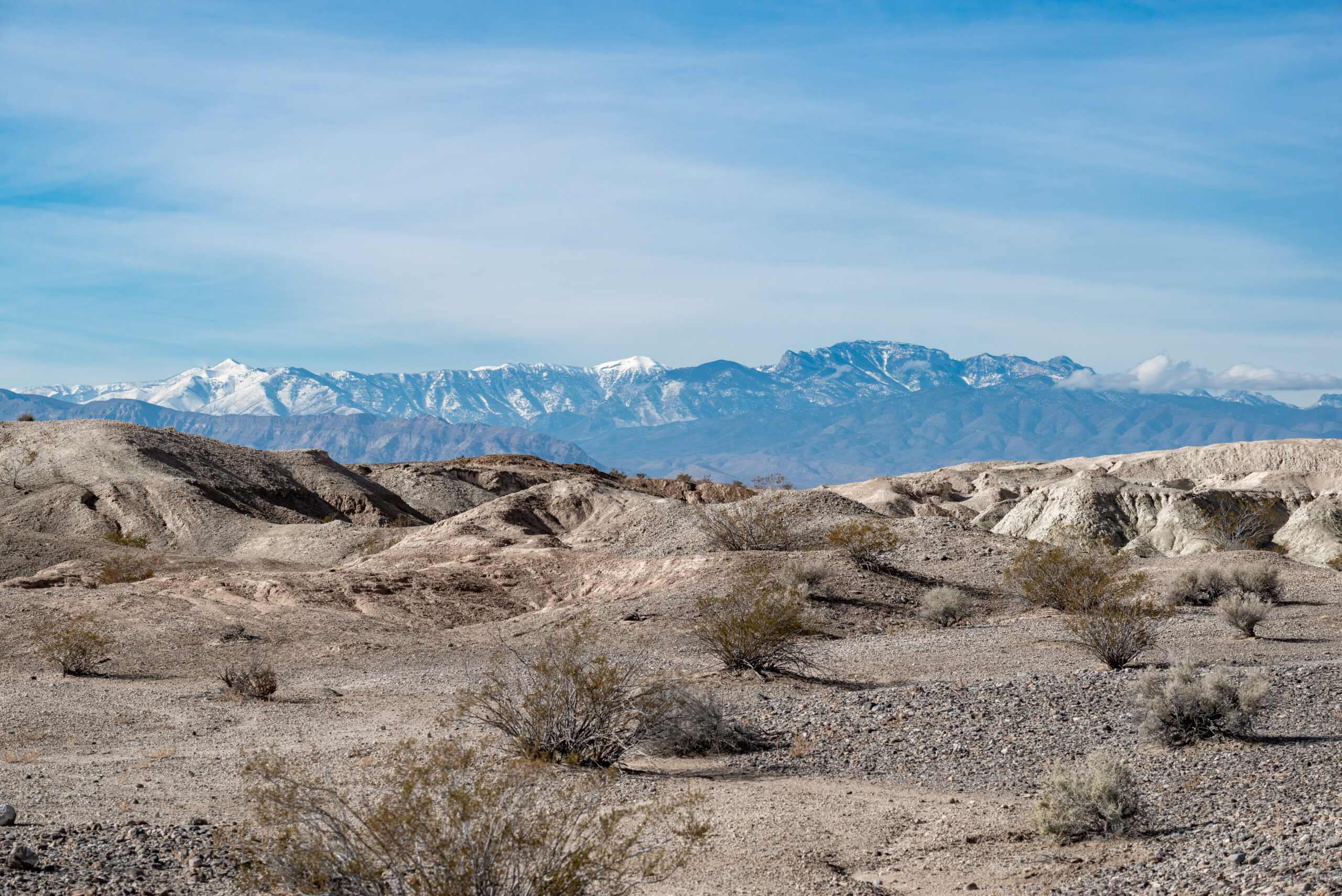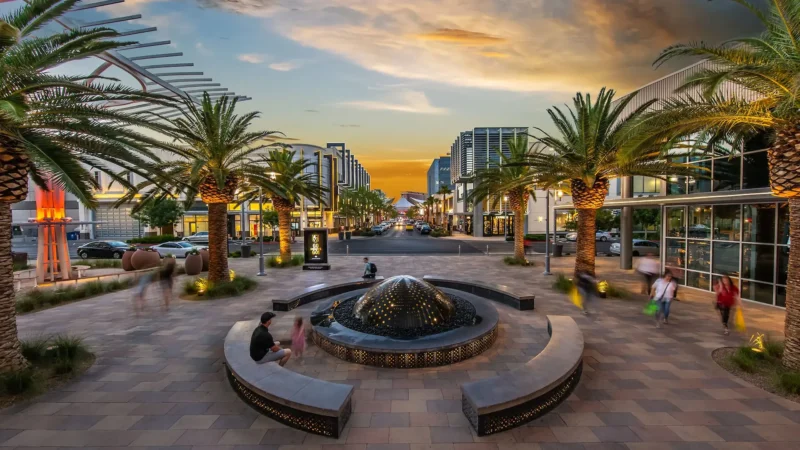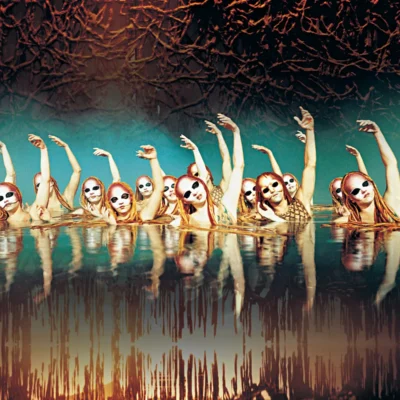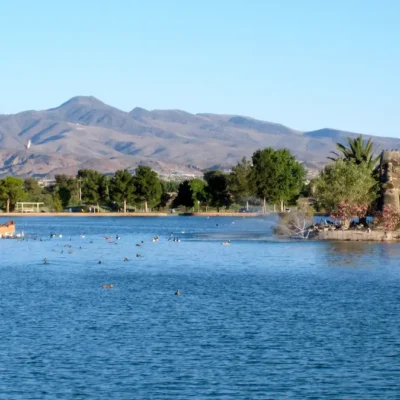Ask any Las Vegas local what to do while you’re visiting, and there’s a good chance they’ll send you off The Strip for outdoor recreation. The places beyond the neon include some of the most unique landscapes on Earth mixed with what has been called “unparalleled outdoor access.”
Consider rock climbing, hiking, and biking in Red Rock Canyon National Conservation Area, about a 45-minute drive west of the Strip. To the northwest lies Mt. Charleston and the Spring Mountains National Recreation Area, which offers a multitude of hiking options in the summer and skiing in the winter (yes, Las Vegas has a ski resort!).
If water play is your thing, look no further than Lake Mead National Recreation Area, where you can rent a boat, kayak, or stand-up paddle board. Plus, there’s world-class mountain biking in Bootleg Canyon outside Boulder City, unique geologic features like the Fire Wave to explore in Valley of Fire State Park, and petroglyphs steeped in history in Sloan Canyon National Conservation Area.
In fact, draw a circle around Las Vegas, and you’ll find seven national parks within a five-hour drive of the valley, offering diverse outdoor experiences for every type of adventure lover. Las Vegas may be an underrated outdoor recreation destination, but read on to learn why it’s possibly the best home base in the U.S. for all your outdoor exploits.
Table of contents: Outdoor Recreation Near Las Vegas
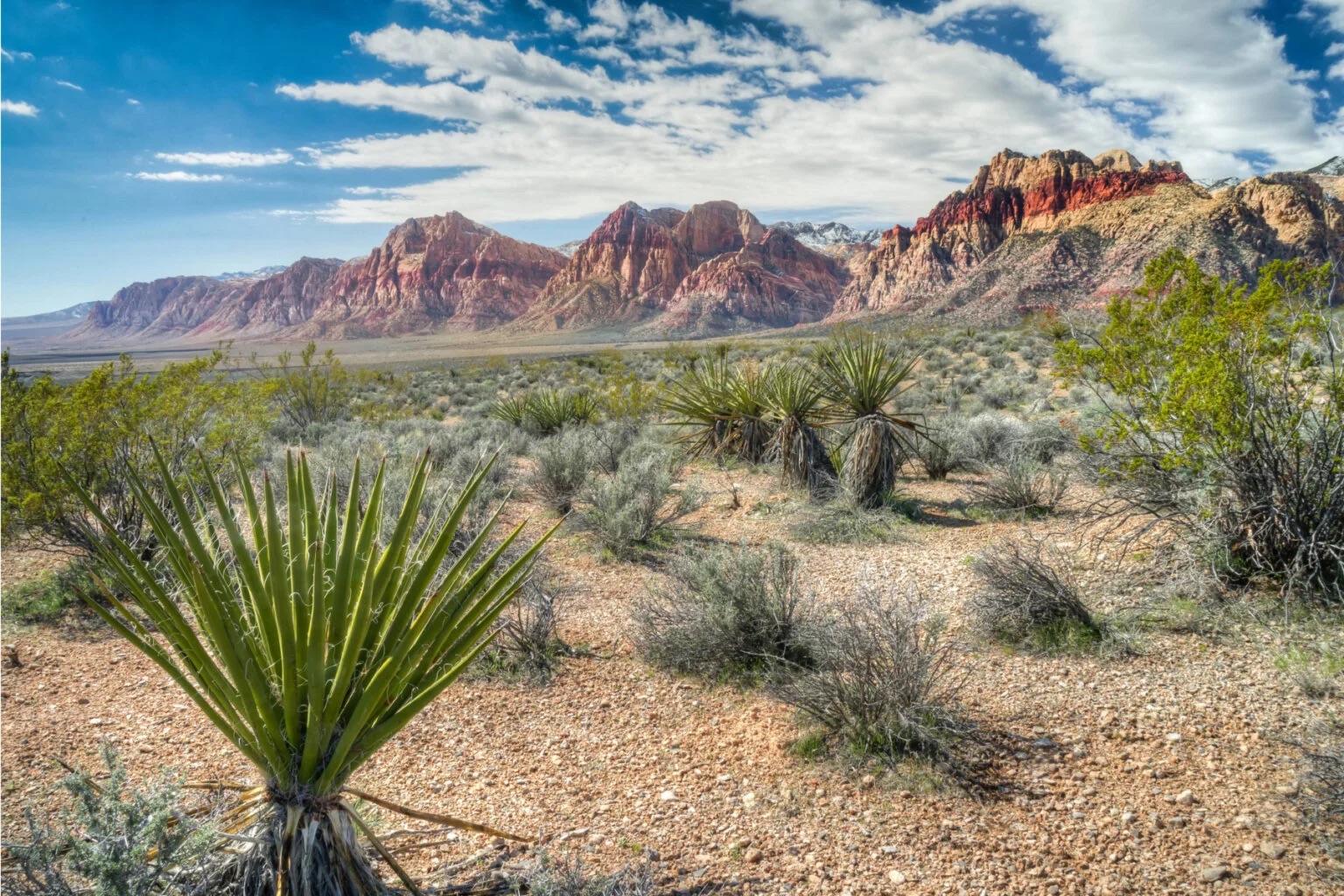
Find Life in Death Valley
Death Valley National Park | Two Hours from Las Vegas
The closest national park to Las Vegas is just across the border in California. While Death Valley is famous for being the hottest place on earth and the driest place in North America, it’s also the largest national park in the Lower 48.
The park’s 3.4 million acres cover a vast amount of land, hundreds of miles of backcountry roads, and an amazing variety of terrain and historic sights. If you’ve only got one day in the park, be sure to catch the sunrise at Zabriskie Point, visit Badwater Basin, the lowest point in North America, at 282 feet below sea level, drive Artists Drive, a 9-mile paved scenic drive through rainbow-colored hills, and watch the sunset at the Mesquite Flat Sand Dunes.
If you have the whole weekend, be sure to add in hikes in Mosaic or Golden Canyons and take the drive up to the Ubehebe Crater, a 600-foot-deep volcanic crater. High-clearance vehicle drivers need to check out The Racetrack, which is famous for tracks left by moving rocks on the dry lakebed. Finally, given the park’s designation as a Dark Sky Park, it’s a must-do to stick around after sunset and enjoy a few hours of stargazing.
Let’s not forget those stunning spring wildflowers, either.
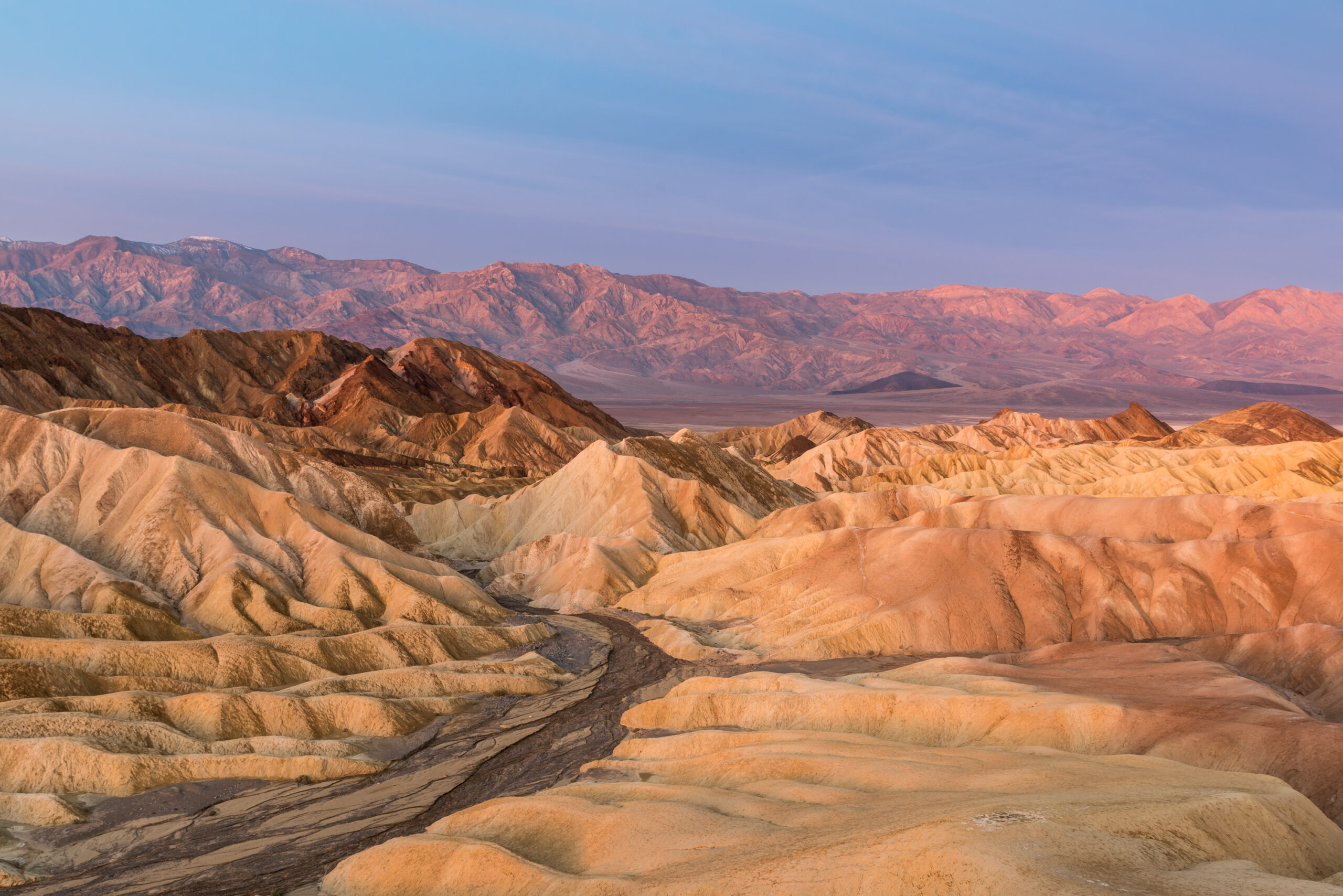
Visit Joshua Tree
Joshua Tree National Park | Four Hours from Las Vegas
The other California park on our list gets its name from the Joshua Trees you’ll find throughout the park and the surrounding Mojave Desert. What you might not know is that Joshua trees aren’t trees at all – they’re actually a member of the agave family.
Most of the park’s popular attractions can be found along Park Boulevard, which runs between the west and north entrances. Start your day viewing the sunrise from Keys View, which has panoramic views of Mount San Jacinto and the Coachella Valley. Next, check out the area’s rock formations and interesting mix of boulders on the Arch Rock Trail, which takes you by two of the most iconic rock formations in the park, or the Skull Rock Trail, which takes you by one of the most photographed rocks in the park.
While you’re out on the trails, be sure to keep an eye out for rock climbers scaling one of the park’s 8,000 climbing routes. If you’re looking for a slightly more strenuous hike, check out the hidden oasis of palm trees at the end of the Fortynine Palms trail.
Before you head home, stop by the cholla cactus garden, a large cluster of cactuses that practically glows in the sunlight. These teddy bear cholla may look cute, but don’t touch!
Joshua Tree is also an International Dark Sky Park, so stick around and admire the Milky Way after sunset.
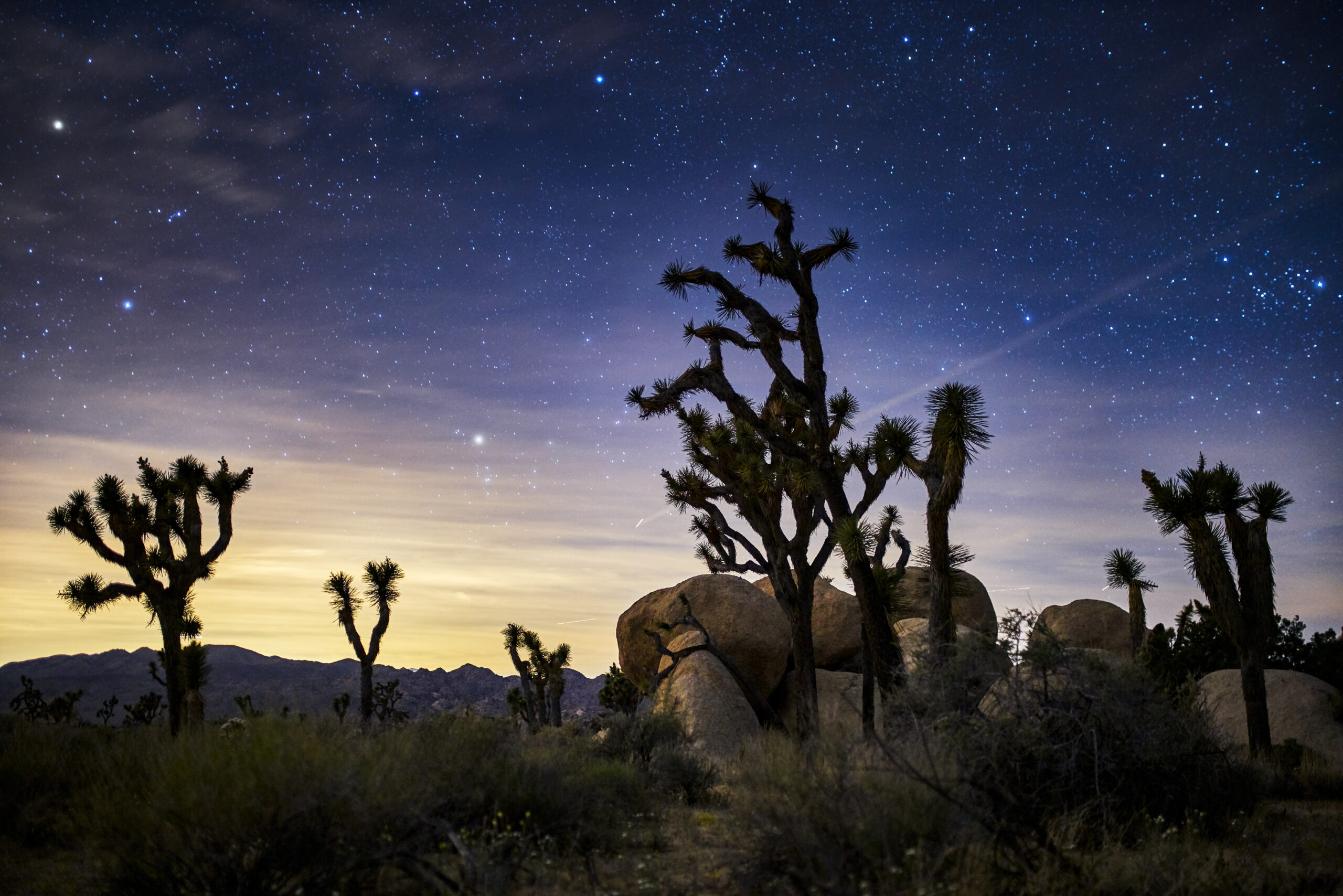
Great Basin National Park
Great Basin National Park | 4.5- Hours from Las Vegas
Nevada’s only national park spans from the sagebrush-covered foothills to the 13,063-foot summit of Wheeler Peak, Nevada’s second-highest mountain. The park’s most popular attraction is taking a guided tour of Lehman Caves, the state’s longest cave system. Cave tours are ranger-led and offered daily, but spots fill up fast, so be sure to book them in advance.
Once you’re back out in the fresh air, drive up the 12-mile scenic drive to the base of Wheeler Peak, where you can hike the Alpine Lakes Loop trail to Stella and Teresa Lakes. Next, walk among the ancient bristlecone forest, which houses some of the oldest trees on earth. Then, make your way to a view of Nevada’s only glacier and one of the southernmost glaciers in the U.S.
Backpacking is a great way to see the less traveled side of the park, with a 13-mile loop taking hikers to Baker and Johnson lakes. Great Basin is also an International Dark Sky Park and hosts an Astronomy Festival each September when volunteer amateur astronomers gather with their telescopes to showcase the night sky.
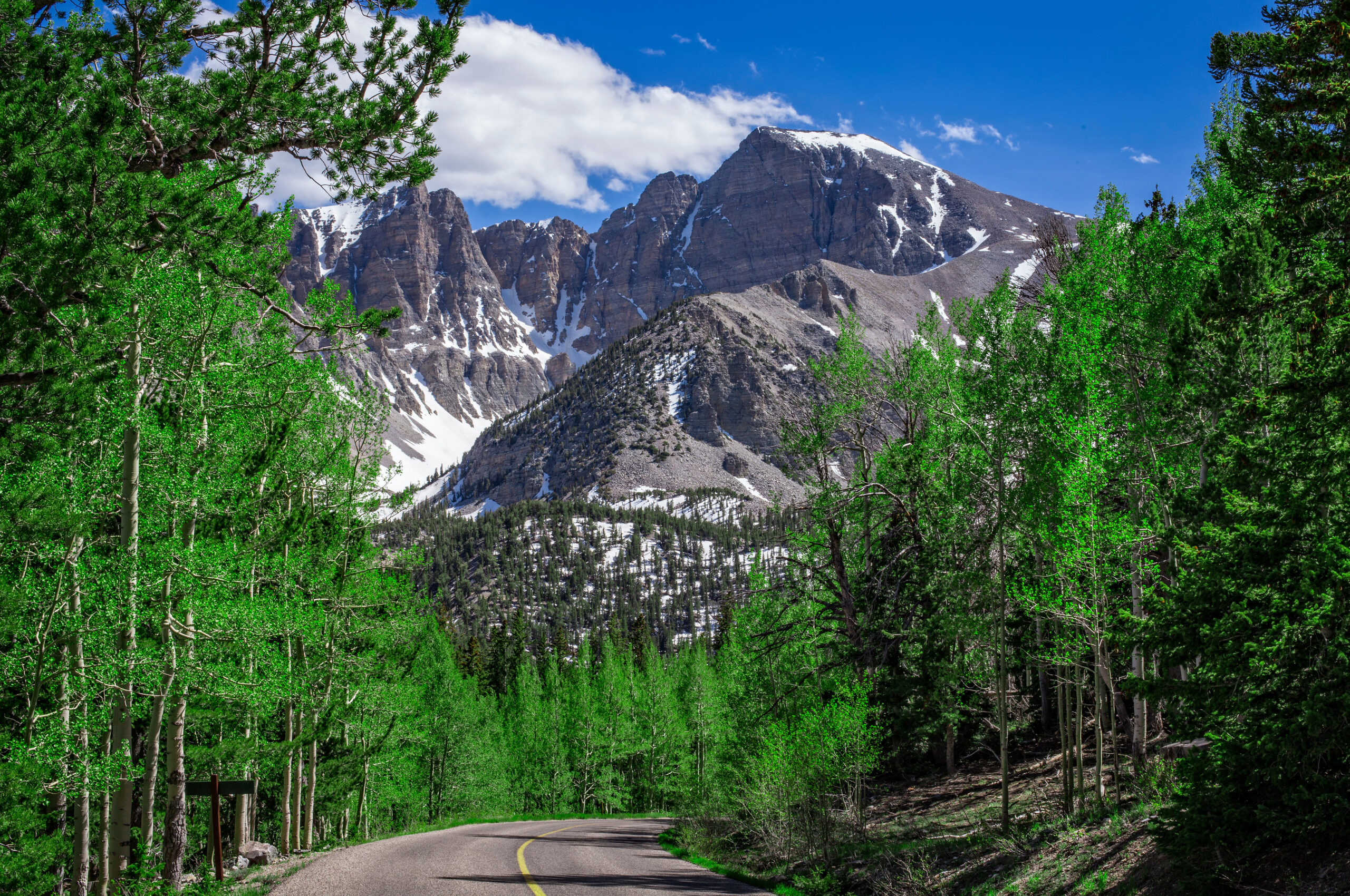
Visit the Grand Canyon
Grand Canyon National Park | South Rim – 4 Hours from Las Vegas; North Rim – 4.5 Hours
One of the Seven Wonders of the Natural World, the Grand Canyon is a stark reminder of the power of nature. The canyon, with the Colorado River flowing at its bottom, runs 217 miles long and, at times, is up to 18 miles wide. Visitors can choose to visit either the North or South Rim, although only the South Rim is open year-round.
The North Rim, which sits about 1,000 feet higher than the South Rim, is only open from mid-May to mid-October but offers beautiful views and multiple options for day hikes. Most of the park’s five million annual visitors head to the south rim, with its stunning viewpoints and additional amenities. You really can’t see it all in a day at this park, but be sure to visit at least a few of the area’s viewpoints – each spot has its own charm!
You can take the park shuttle to get to the vistas or walk the Rim Trail, a flat, mostly paved trail stretching along most of the south rim. If you’re feeling adventurous, hike below the rim on the Bright Angel Trail to Havasupai Gardens or Plateau Point for a stunning view of the Colorado River. Just remember – it’s easy going down but MUCH harder coming back up, so be sure to bring enough water and snacks.
End the day watching the sunset from one of the viewpoints you didn’t get a chance to see earlier.
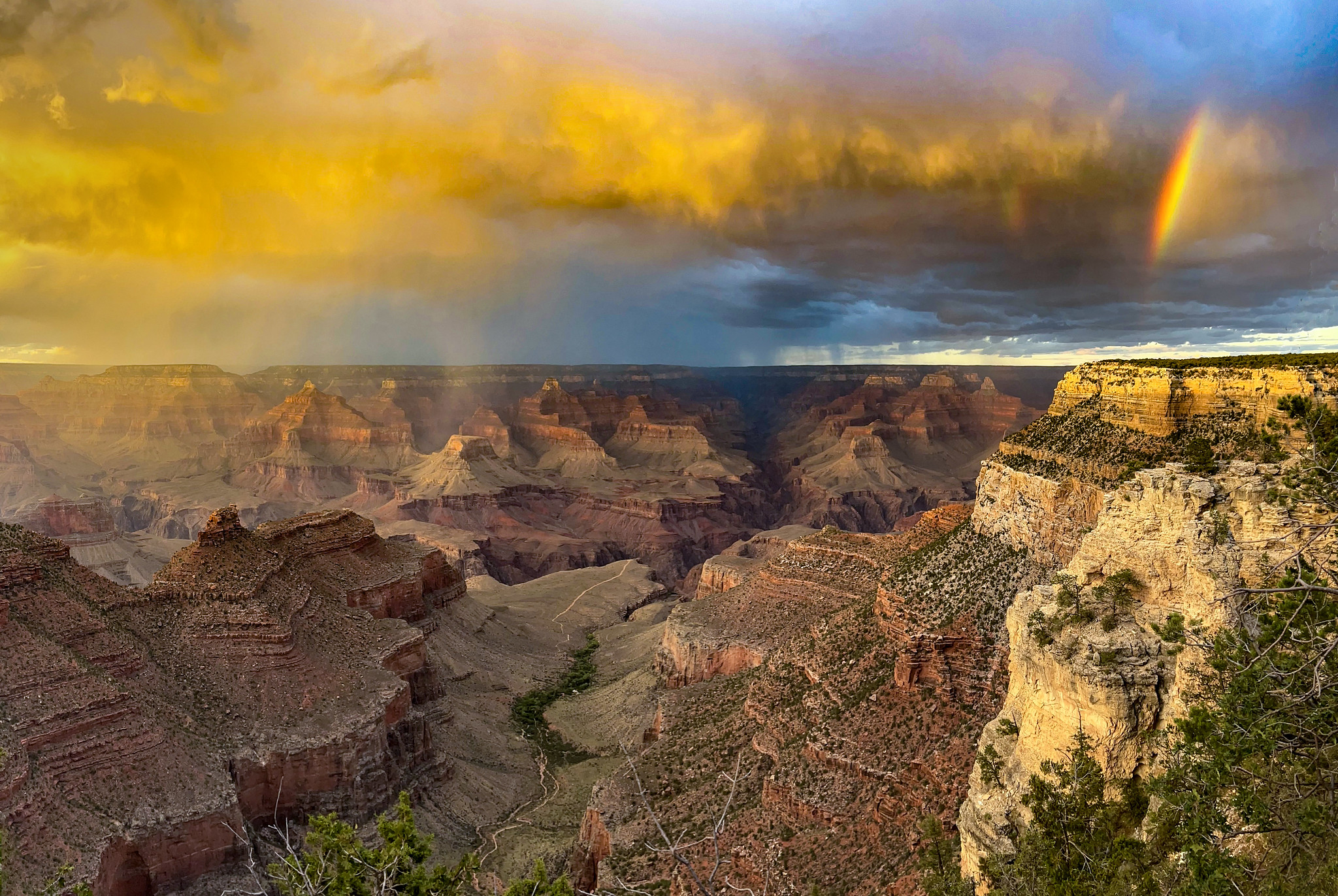
Zion National Park
Zion National Park | 2.5 Hours from Las Vegas
Zion Canyon’s towering sandstone cliffs were carved millions of years ago by the Virgin River, creating awe-inspiring views around every corner. Most visitors spend most of their time in the main 15-mile-long canyon, which is closed to cars much of the year.
Park at the visitor center or in the town of Springdale and take the free park shuttle to one of the many trailheads lining the canyon. Angel’s Landing, with its narrow ridgeline, climbing chains, and 360-degree views, is the most iconic trail in the park, but you’ll need to reserve a permit in advance.
Hiking the Narrows is also a popular option, but be prepared to get wet as you walk through the Virgin River, where walls tower above you on both sides.
A family-friendly hiking option is Emerald Pools, which not only visits three pools but also a waterfall. If you want amazing views without all the crowds, check out the Kolob Canyons area in the park’s northwest, or drive through the Zion-Mount Carmel Tunnel and visit the park’s east rim for a little rock scrambling along the road.
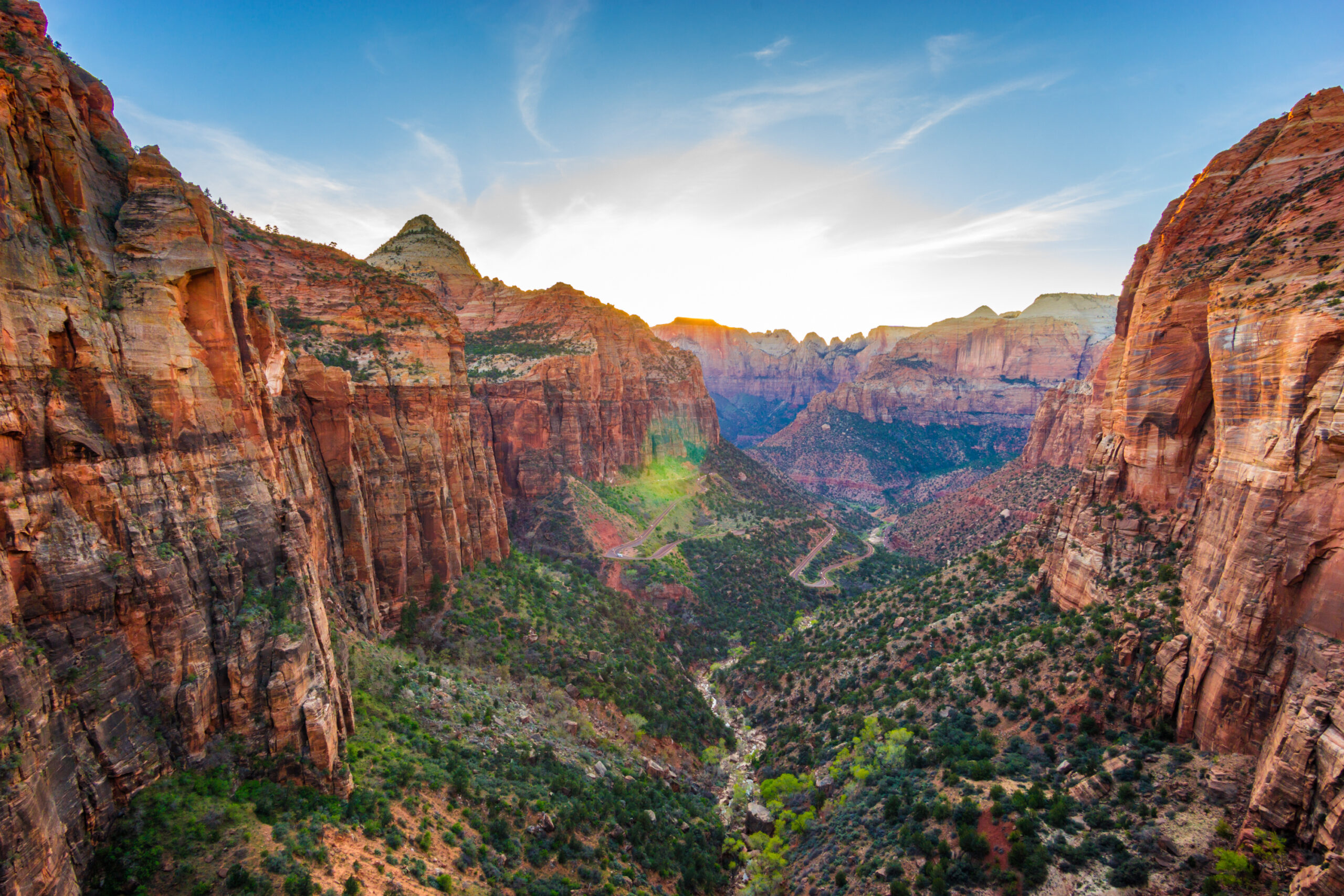
Bryce Canyon National Park
Bryce Canyon National Park | Four Hours from Las Vegas
A short drive further east in Utah, you’ll end up in a fantasyland of rock formations and hoodoos in Bryce Canyon. Hoodoos, or irregular columns of rock, exist on every continent, but Bryce Canyon holds the largest concentration found on Earth.
The park’s high elevation also means snow in the winter and cooler temperatures in the summer. Start your day by taking a drive along the park’s 18-mile scenic drive, making sure to stop at one of the many viewpoints along the way. Bryce Canyon is shaped like an amphitheater, meaning the views keep changing as you continue your drive along the rim.
After you’ve had your fill of views, hike down into the hoodoos on the Queens Garden Trail, connecting with the Navajo Loop Trail to get back to the top. If you want to lose the crowds, check out the 8-mile Fairyland Loop trail in the park’s northern section for some solitude among the rock formations.
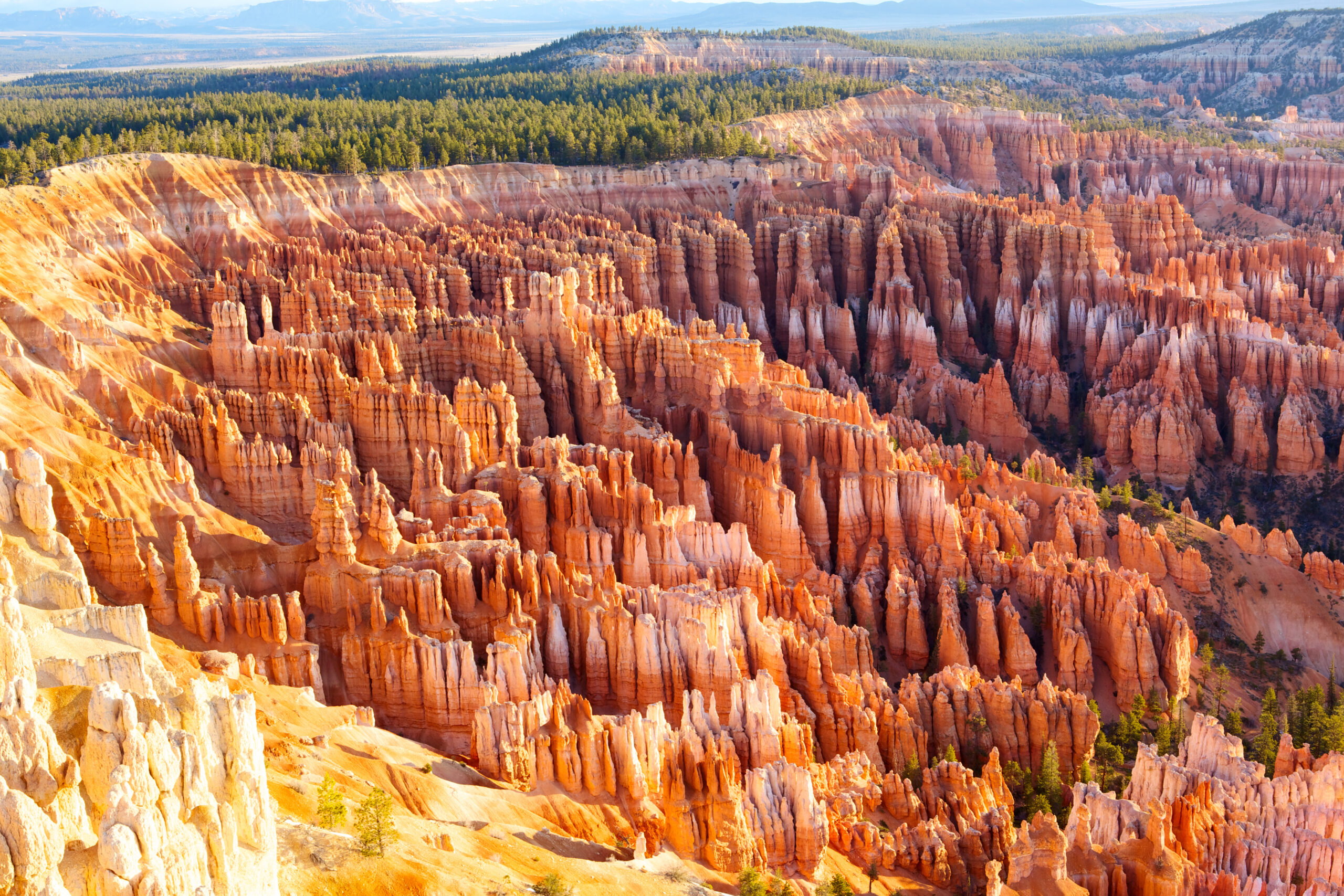
Capitol Reef National Park
Capitol Reef National Park | Five hours from Las Vegas
Five hours from Las Vegas, Capitol Reef is the furthest park on our list, but it’s worth the extra time on the road! The park sits in the heart of Utah’s red rock country and is a hidden treasure filled with cliffs, canyons, domes, and bridges. The park’s main feature is the Waterpocket Fold, a geologic monocline (translation: wrinkle in the earth) extending almost 100 miles. Be sure to drive the 8-mile paved Capital Reef Scenic Drive, stopping along the way to hike to Cassidy Arch or the Golden Throne. The historic Fruita District, which formed as a Momon settlement in the 1870s, welcomes visitors with its orchards, a one-room schoolhouse, and the Gifford House. Along Utah Highway 24, which runs through the park, you can stop to see a petroglyph panel or hike to a natural bridge. Be sure to stop by Panorama Point and take the short hike to Sunset Point to cap off an amazing day.
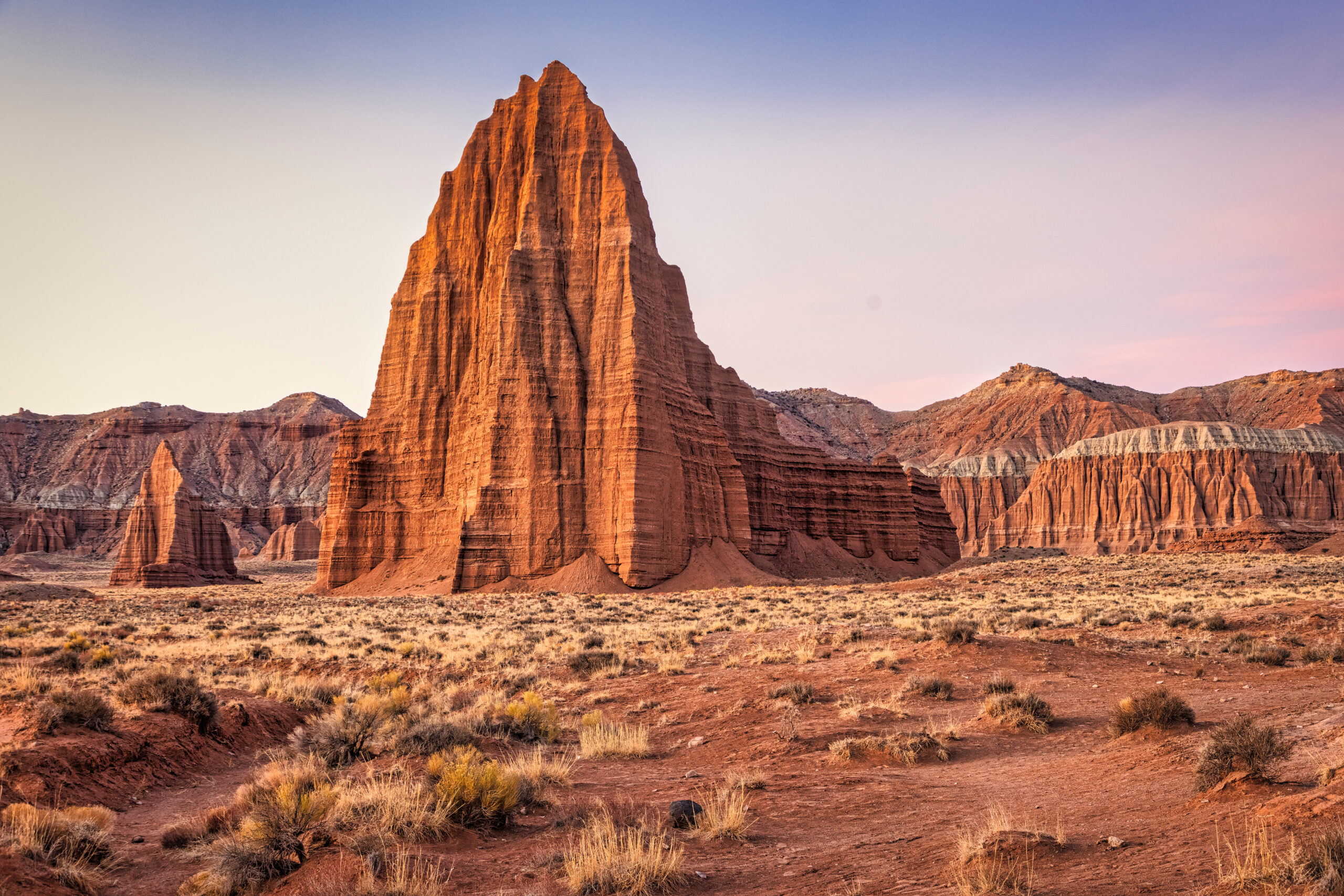
More Outdoor Recreation Near Southern Nevada
And those are just the national parks within a five-hour drive of the city! There are countless other state parks, national monuments, and wildlife refuges within a day’s drive of Las Vegas as well. Check out the list below for your next weekend getaway:
- Mojave National Preserve
- Gold Butte National Monument
- Tule Springs Fossil Beds National Monument (“tool-ee”)
- Cedar Breaks National Monument
- Grand Staircase-Escalante National Monument
- Desert National Wildlife Refuge
- Ash Meadows National Wildlife Refuge
- Pahranagat National Wildlife Refuge
- Beaver Dam State Park
- Kershaw-Ryan State Park
- Cathedral Gorge State Park
- Echo Canyon State Park
- Spring Valley State Park
